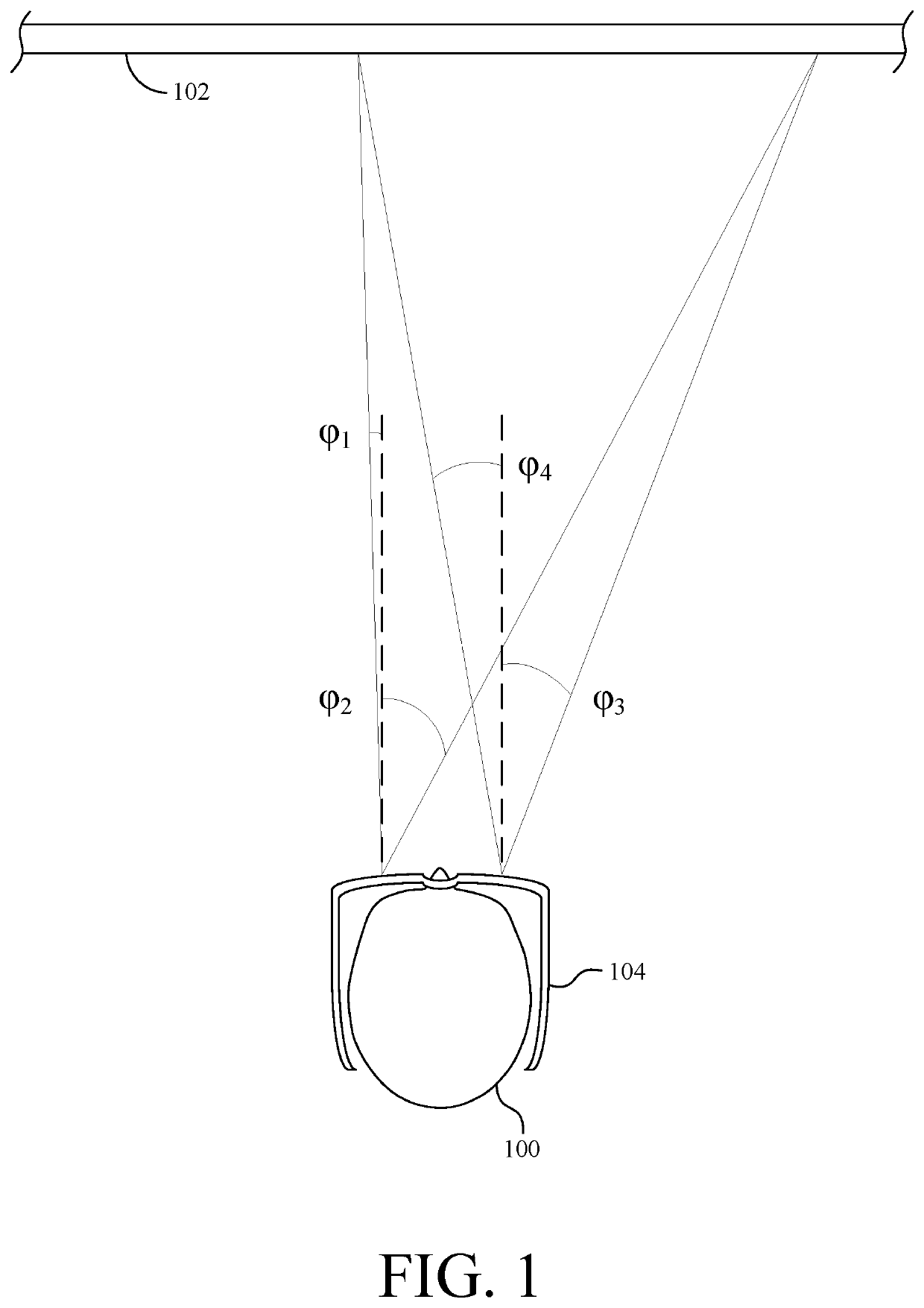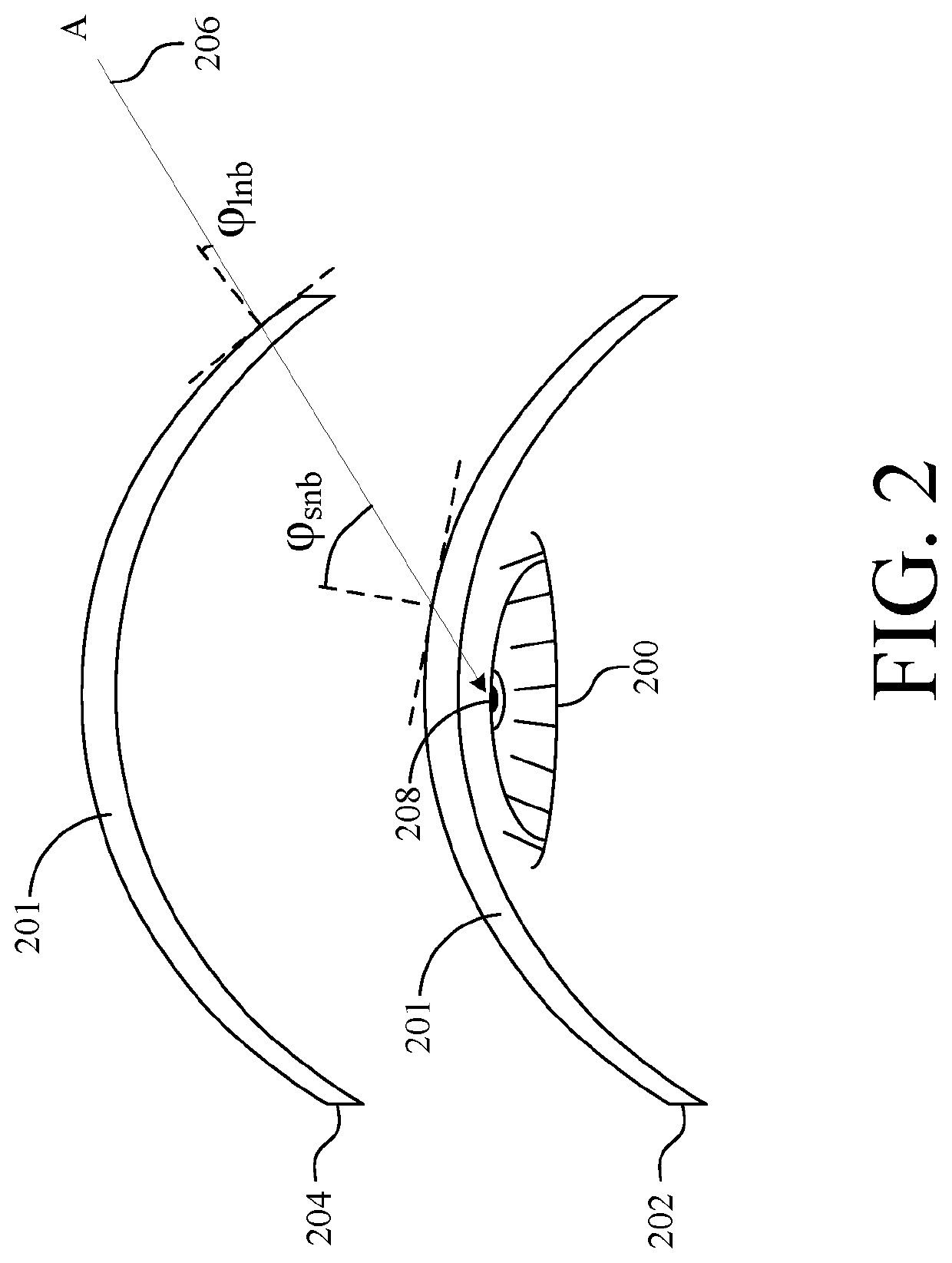3D eyewear adapted for facial geometry
a facial geometry and projection system technology, applied in the field of three-dimensional projection systems, can solve the problems of reducing optical efficiency, crosstalk between the right eye and the left eye filter, and system utilizing spectral separation, so as to minimize wavelength shifting, short nose bridges, and long nose bridges
- Summary
- Abstract
- Description
- Claims
- Application Information
AI Technical Summary
Benefits of technology
Problems solved by technology
Method used
Image
Examples
Embodiment Construction
[0028]The present invention overcomes the problems associated with the prior art, by providing three dimensional (3D) eyewear that is suited for users of varying facial geometries. In the following description, numerous specific details are set forth (e.g., widths of spectral bands, lens characteristics, etc.) in order to provide a thorough understanding of the invention. Those skilled in the art will recognize, however, that the invention may be practiced apart from these specific details. In other instances, details of well-known 3D projection practices (e.g., image generation and filtering) and components have been omitted, so as not to unnecessarily obscure the present invention.
[0029]FIG. 1 shows a viewer 100 viewing a 3D projection screen 102 through a pair of 3D glasses 104. Light composing 3D images reflects off screen 102 and enters the eyes of viewer 100 through lenses (not visible) built into a pair of 3D glasses 104. The lenses spectrally filter the light to pass only li...
PUM
 Login to View More
Login to View More Abstract
Description
Claims
Application Information
 Login to View More
Login to View More - R&D
- Intellectual Property
- Life Sciences
- Materials
- Tech Scout
- Unparalleled Data Quality
- Higher Quality Content
- 60% Fewer Hallucinations
Browse by: Latest US Patents, China's latest patents, Technical Efficacy Thesaurus, Application Domain, Technology Topic, Popular Technical Reports.
© 2025 PatSnap. All rights reserved.Legal|Privacy policy|Modern Slavery Act Transparency Statement|Sitemap|About US| Contact US: help@patsnap.com



